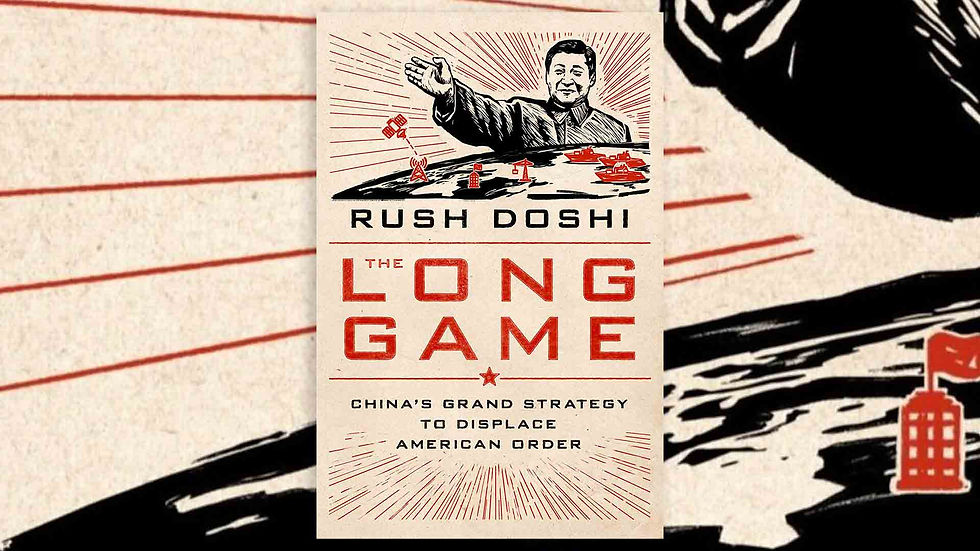Mastering Building a StoryBrand: An In-Depth Guide to Storytelling in Marketing
- vickygunawan
- Mar 16
- 3 min read

In a world overflowing with ads, brands that communicate clearly stand out. Donald Miller’s Building a StoryBrandprovides a structured storytelling framework that simplifies messaging, engages customers, and drives sales. By following these seven steps, we can craft marketing that deeply connects with our audience.
The StoryBrand Framework: 7 Essential Steps
1. The Customer Is the Hero
Many brands make the mistake of positioning themselves as the hero. But customers don’t need another hero—they need a solution. Our job is to guide them to success.
Key Takeaways:
The focus should always be on how our brand helps the customer win.
Avoid self-centered messaging; highlight how the product benefits the customer.
Example (FMCG): Instead of “We use premium ingredients,” say, “Enjoy delicious snacks without the guilt.”
2. The Customer Has a Problem
Every compelling story has conflict. Customers buy solutions to their problems, and we must show that we understand their struggle.
The Three Types of Problems:
External: The surface-level issue (e.g., “I need a healthy snack for my busy day.”)
Internal: The emotional struggle (e.g., “I feel guilty about eating unhealthy food.”)
Philosophical: The deeper belief (e.g., “Healthy eating should be easy and enjoyable.”)
Key Takeaways:
Emotional struggles drive buying decisions. Speak to the internal problem.
Example (FMCG): A protein bar brand could say, “Stay energized and guilt-free with every bite.”
3. How do we position ourselves as the guide?
Customers don’t need competition; they need guidance. To establish trust, we must display:
Empathy: Show that we understand the customer’s problem.
Authority: Demonstrate expertise and credibility.
Key Takeaways:
Shift the narrative from “We are the best” to “We understand and can help.”
Example (FMCG): “We know how hard it is to find healthy snacks. That’s why we make clean, delicious options loved by millions.”
4. What's our plan to help them?
Confusion kills sales. A simple, three-step plan removes uncertainty and gives customers a clear path forward.
Example Plan:
Pick Your Favorite Snack – Browse our range of flavors.
Enjoy a Nutritious Treat – Snack worry-free.
Feel Great About Your Choice – Stay energized and satisfied.
Key Takeaways:
A simple plan builds trust and reduces hesitation.
Example (FMCG): “Choose your snack → Enjoy guilt-free → Stay energized.”
5. What Call to Action do we give?
People don’t take action unless prompted. We must be clear and direct about what they should do next.
Types of Calls to Action (CTA):
Direct CTA: Pushes for immediate action (e.g., “Buy Now,” “Try It Today”).
Transitional CTA: Encourages further engagement (e.g., “Learn More About Our Ingredients,” “Download a Free Recipe Guide”).
Key Takeaways:
Every website, ad, and product page should feature a clear Call to Action.
Example (FMCG): “Order today and get your first box delivered for free.”
6. Show What Happens If They Don’t Act
A sense of urgency encourages action. We must highlight the risks of doing nothing.
Example (FMCG): “Without healthy snacks, you may keep making choices that leave you feeling sluggish and guilty.”
Key Takeaways:
Subtly remind customers of what they stand to lose by not taking action.
Example: “Don’t let unhealthy habits slow you down—choose smarter snacking today.”
7. Show the Success They Can Achieve
Customers buy transformation, not just products. We must paint a vision of how their life improves.
Example (FMCG): “Enjoy guilt-free, delicious snacks anytime, anywhere—because you deserve a treat that fits your lifestyle.”
Key Takeaways:
Use testimonials and imagery to reinforce customer transformation.
Example: “Feel confident in your snack choices with every bite.”
Applying the StoryBrand Framework in FMCG Marketing
1. Packaging & Product Design
Use clear, customer-focused messaging.
Example: Instead of “Organic Ingredients,” say, “Feel good about what you eat.”
2. Website & E-commerce Optimization
Structure web content using the StoryBrand framework.
Example: Headlines should address the customer’s problem, and CTAs should be prominent.
3. Social Media & Advertising
Create campaigns that highlight customer transformation over product features.
Example: Show customers enjoying the product in real-life scenarios.
4. Retail Displays & In-Store Marketing
Use storytelling to make the brand relatable.
Example: A snack company might display: “Made for busy professionals who want to snack smart.”
Building a StoryBrand isn’t just about storytelling—it’s about creating clarity in marketing. When we make our customer the hero and guide them toward success, our messaging becomes clear, engaging, and effective.



Comments